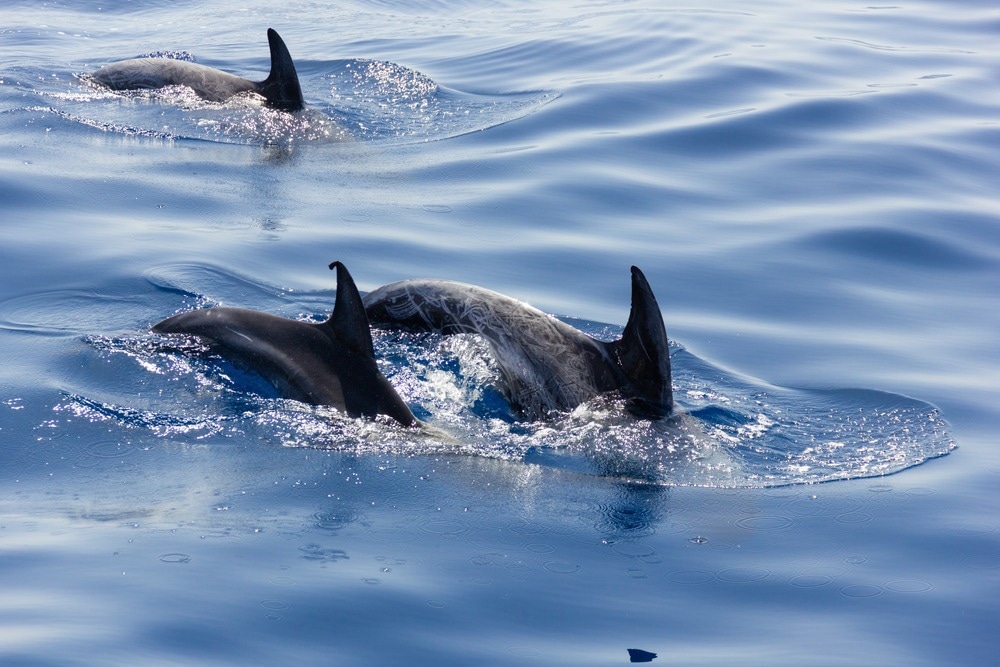A new Pathogens journal study examines SARS-CoV-2 infection in stranded cetaceans found dead along the Italian coast. The National Reference Centre for Diagnostic Investigations on Stranded Marine Mammals, in collaboration with the Istituti Zooprofilattici Sperimentali, screened stranded for SARS-CoV-2 cetaceans along the Italian coast between 2020 and 2022.

Study: Potential SARS-CoV-2 Susceptibility of Cetaceans Stranded along the Italian Coastline. Image Credit: Josu Ozkaritz / Shutterstock.com
Background
The coronavirus disease 2019 (COVID-19), which arises from infection with the severe acute respiratory syndrome coronavirus 2 (SARS-CoV-2), has caused over 6.53 million deaths worldwide. In addition to infecting humans, SARS-CoV-2 can potentially infect various types of wild mammals.
Previously, SARS-CoV-2 has been found to infect and replicate in ferrets, cats, rabbits, and farmed mink. In farmed mink, spillover occurred into farm workers in Poland and the Netherlands.
Similar infections were identified in other mammals; however, most wild animals do not appear to have a significant role in the current spread of SARS-CoV-2 among humans, albeit pet hamsters have demonstrated the possibility of zoonotic spread. Yet, the circulation of SARS-CoV-2 in animals could promote the emergence of new variants while also putting them at risk.
If, as in humans, SARS-CoV-2 infection in animals leads to pneumonia, animals could die, thus affecting wildlife conservation efforts. This type of impact on wildlife has been reported with the cetacean morbillivirus (CeMV), which has caused large numbers of deaths among cetaceans.
Cetaceans and ACE2
Since cetaceans have homologous angiotensin-converting enzyme 2 (ACE2) receptors to those in humans, they are considered potentially susceptible to infection with SARS-CoV-2, especially given the broad host range of this virus. However, there is no evidence of such reverse zoonosis.
Wastewater contaminated with SARS-CoV-2 could carry the virus to susceptible cetaceans and other species in the aquatic environment, depending on the temperature, humidity, type of water treatment, presence of other microbes, and effects of ultraviolet light and chemicals. With high viral titers, SARS-CoV-2 may survive, especially in the cold, for over 20 days at 4o C or one week at 22o C.
Cetaceans may also act as a natural reservoir for zoonotic microbes, thereby making surveillance for SARS-CoV-2 essential in the case of stranded cetaceans.
Much more work is needed to understand how such infections affect these mammals, what symptoms occur, whether ACE2 on cetacean macrophages mirrors that in human immune cells, and whether these cells become decoys, or 'Trojan horses,' for the SARS-CoV-2, thus enabling it to enter the lung parenchyma and anchor itself there.
Study findings
The presence of specific antibodies against SARS-CoV-2 from 61 lung tissue specimens and 25 swabs was reported. ACE2 receptor expression remained intact, irrespective of age, gender, and species. However, the origin of the cetacean, whether wild or captive, did show a small association.
The current study was small; therefore, research on a larger scale is essential to confirm these associations.
The researchers also assessed the presence of ACE2 in lung samples from four animals belonging to S. coeruleoalba and T. truncatus associated with the activation of CD68 macrophages. This experiment aimed to explore the degree of ACE2 expression on inflammatory cells infiltrating the lungs.
The pulmonary intravascular macrophage (PIM) that engulfs and phagocytizes foreign particles is found in blood, while alveolar macrophages reside in the lungs. ACE2 and CD68 molecules were found on cells only in animals exhibiting infection caused by various microbes.
Implications
Marine cetaceans must be closely monitored to prevent a resurgence of SARS-CoV-2 and further transmission to endangered species living near humans.
To date, 23 species of animals from 36 countries are capable of being infected by SARS-CoV-2, which has led to nearly 680 outbreaks among animals. As a result, scientists fear the potential for spillover events into humans and their potential to cause new pandemics in the future.
Though ACE2 expression did not vary in these cetaceans by age or sex, captive cetaceans showed a higher level of expression. This could be due to their higher stress level, resulting in higher cortisol levels.
Alternatively, this could be related to the drugs used to treat captive animals. However, more extensive studies in the future are needed to confirm this association.
The current study emphasized the critical role of neutrophils and macrophages in the innate immune-inflammatory response to SARS-CoV-2. The co-localization of ACE2 with CD68 at higher levels in infected lung tissue, likely on activated type 1 macrophages (M1), may indicate that both alveolar and PIM macrophages are in the frontline of defense against SARS-CoV-2 and may be immediate targets of the virus.
From a One Health perspective, monitoring stranded specimens for systematic surveillance of SARS-CoV-2 infection in marine mammals is essential to protect human health and that of endangered marine mammal species.”
Journal reference:
- Audino, T., Berrone, E., Grattarola, C., et al. (2022). Potential SARS-CoV-2 Susceptibility of Cetaceans Stranded along the Italian Coastline. Pathogens. doi:10.3390/pathogens11101096.